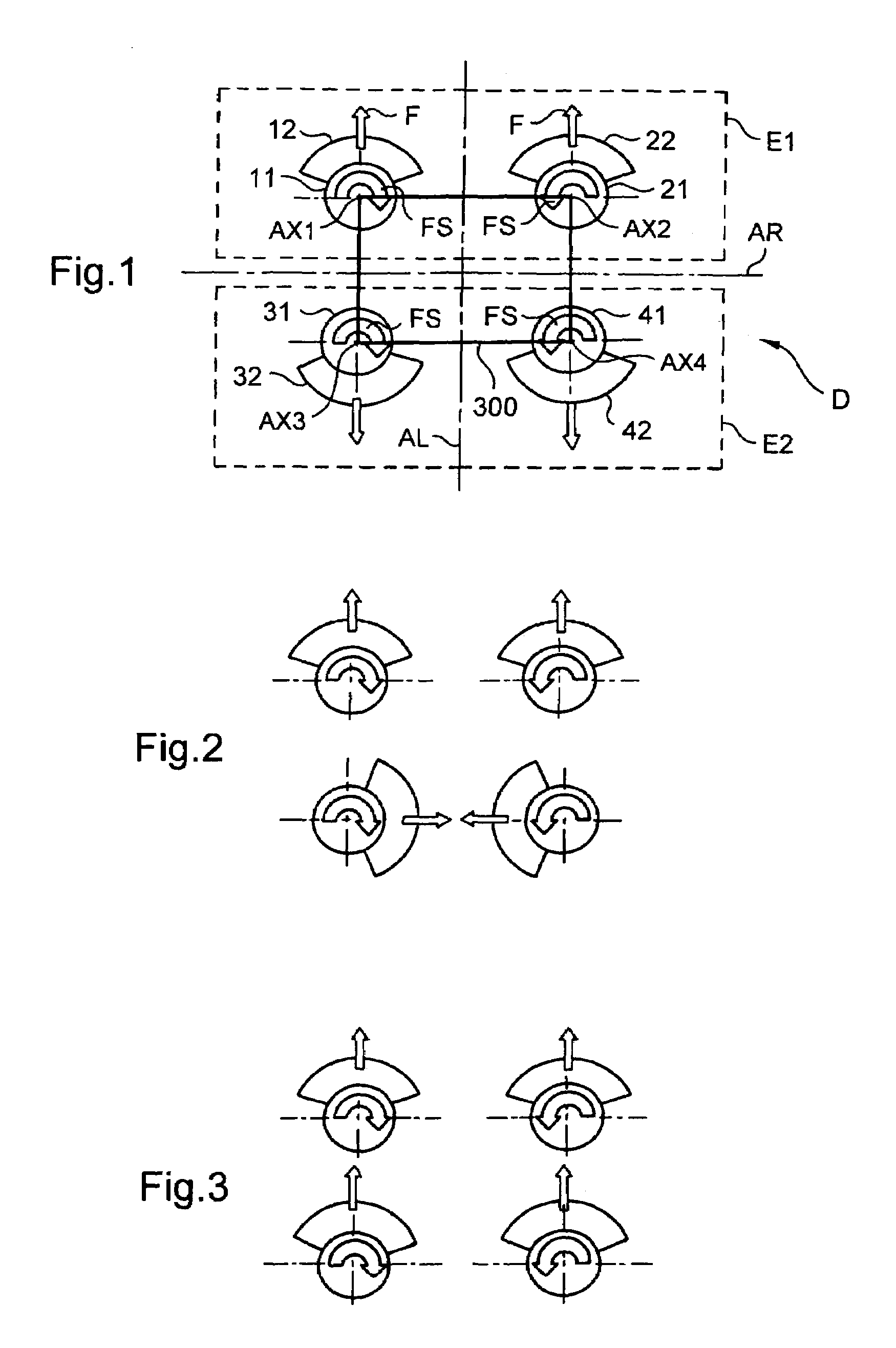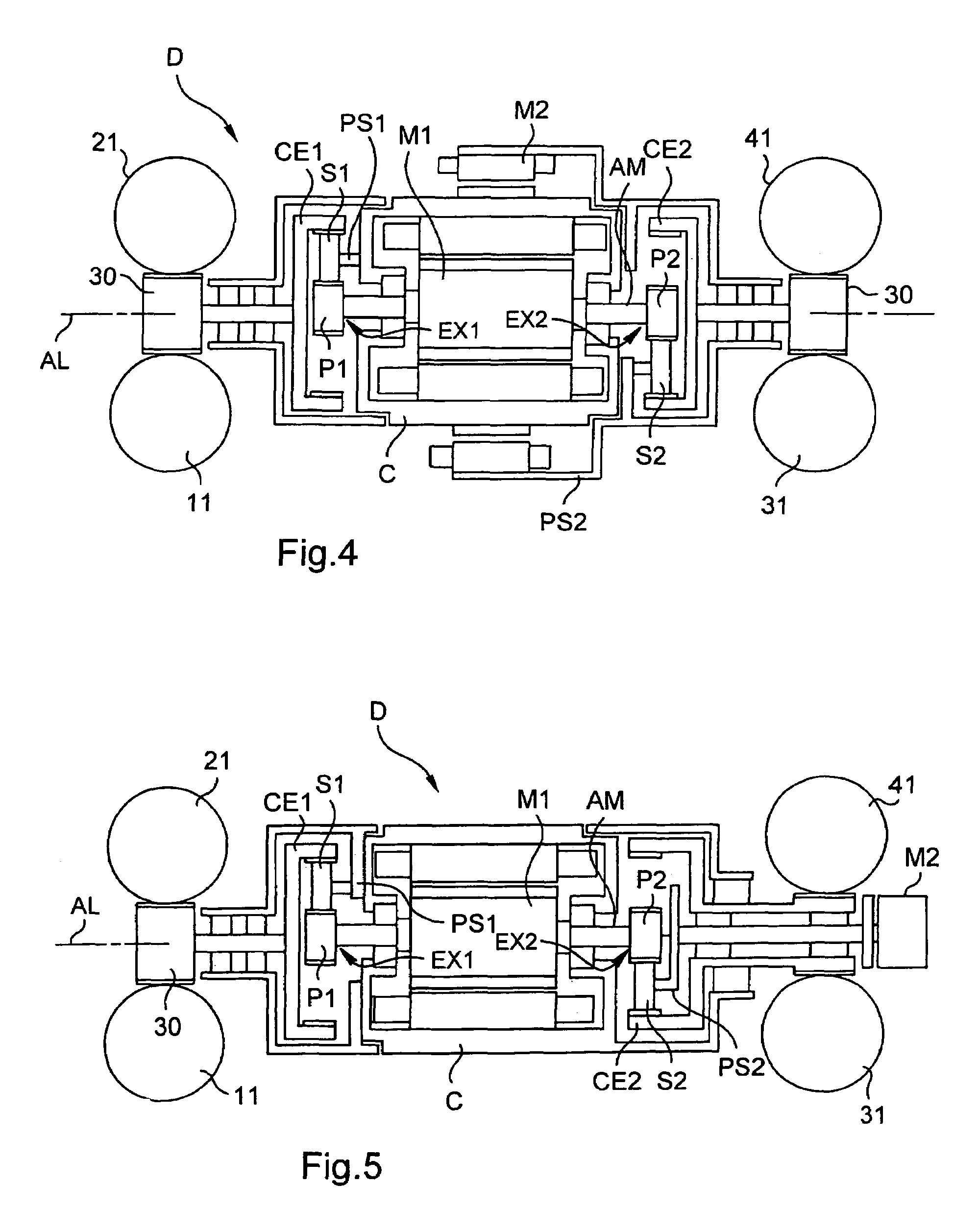Antivibration device having rotary flyweights and an epicyclic geartrain
a technology of epicyclic geartrain and anti-vibration device, which is applied in the direction of anti-hunting elements, rotocraft, toothed gearings, etc., can solve the problems of reducing the comfort of the occupants of the structure, reducing the overall size of the device, and reducing the size of the device. , the effect of minimizing the size of the devi
- Summary
- Abstract
- Description
- Claims
- Application Information
AI Technical Summary
Benefits of technology
Problems solved by technology
Method used
Image
Examples
first embodiment
[0043]FIG. 4 shows the device D.
[0044]It comprises a casing C secured to a structure that is not shown. A main motor M1 secured to the casing C and disposed between the two sets E1 and E2 along the longitudinal axis of symmetry AL serves to rotate the rotors 11, 21, 31, and 41.
[0045]Consequently, a through shaft AM, provided with first and second sun gears P1 and P2 respectively at its first and second ends EX1 and EX2, passes through the main motor M1 along the longitudinal axis of symmetry AL.
[0046]The first sun gear P1 drives a first outer ring gear CE1 constrained to rotate with a first orthogonal gear 30 which transmits rotary motion to the rotors 11&21 with eccentric flyweights 12&22 of the first set E1. Since the speed of rotation of the main motor is high, speed-reducing gearing of the planet type is provided. This gearing comprises at least one first planet gear S1 arranged on a planet carrier PS1 that is stationary and secured to the casing C. The first planet gear S1 co-o...
second embodiment
[0056]With reference to FIG. 5, in a second embodiment, the main and secondary motors M1 and M2 are not concentric, but in line, i.e. they are disposed in succession along the longitudinal axis of symmetry AL.
[0057]Furthermore, sensors deliver signals relating to the phases of the flyweights and to the positions of the main and secondary motors M1 and M2 to a computer (not shown).
[0058]FIG. 6 is an isometric view showing clearly the compact nature of the device D.
[0059]The four rotors 11, 21, 31, and 41 are positioned in the same second plane 200. Similarly, the associated eccentric flyweights 12, 22, 32, and 42 are positioned in the first plane 100.
[0060]Furthermore, the respective axes of rotation AX1, AX2, AX3, and AX4 of the rotors 11, 21, 31, and 41 are mutually parallel and orthogonal to the first and second planes 100 and 200.
[0061]The two rotors 11&21 and 31&41 in each set E1 and E2 are driven to rotate in opposite directions by an orthogonal gear 30. The axis of rotation of...
PUM
 Login to View More
Login to View More Abstract
Description
Claims
Application Information
 Login to View More
Login to View More - R&D
- Intellectual Property
- Life Sciences
- Materials
- Tech Scout
- Unparalleled Data Quality
- Higher Quality Content
- 60% Fewer Hallucinations
Browse by: Latest US Patents, China's latest patents, Technical Efficacy Thesaurus, Application Domain, Technology Topic, Popular Technical Reports.
© 2025 PatSnap. All rights reserved.Legal|Privacy policy|Modern Slavery Act Transparency Statement|Sitemap|About US| Contact US: help@patsnap.com



